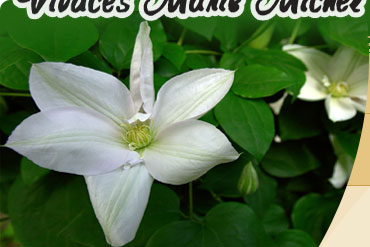ABOUT PERRENIALS
What
is a perennial?
A perennial will
restart it's growing cycle every year thanks to its resistance to the
cold.
A bi-annual is a plant that will flower during its second year of production.
The third year it will flower and resow itself.
Certain bulbs such as lilys are considered as perennials.
Hardiness
zones
A plant's hardiness
is the capacity to resist to average minimal temperature. These zones
will be different depending on geographical location.
- Montreal region : zone 1 to 5B
- Quebec region : zone 1 to 4B
- Sherbrooke region : zone 1 to 4B
- Ottawa region : zone 1 to 5A
- Toronto : zone 1 to 5
- Although very important when planning a garden or flower bed, these
zones are only to be used as reference. Winters are different every
year, certain factor such as snow coverage can play with the plant's
hardiness.
Zone establishment
in conjuction with winter conditions
Zones and
temperature in Celsius:
-Zone 1 : minest –45
-Zone 2A : -46 à –43
-Zone 2B : -43 à –40
-Zone 3A : -40 à –37
-Zone 3B : -37 à –34
-Zone 4A : -34 à –32
-Zone 4B : -32 à –29
-Zone 5A : -29 à –26
-Zone 5B : -26 à –23
-Zone 6A : -23 à –21
-Zone 6B : –21 à –18
Sun exposure
It is very important to know
how many hours of sun the flower bed will be exposed
Full sun : more than 8 hours of sun daily
Partial shade : minimum of 4 hours of sun daily
Full shade : less than 2 hours of sun daily
Transplanting
Perennials are sold
in containers, they can be transplanted anytime of the season.
Division
Division can be
performed in early spring or in fall, not to interfere whit the flowering
period. If flowering is not an issue, division can be performed anytime.
Avoid division during a drought.
Trimming
Trimming should
be executed after flowering. Removing the wilted flowers and part of
the foliage will give your perennial greater vigour and a better appearance.
Preparing
perennial for winter
1- Simply let nature
follow its course. Leaving the foliage intact will favour snow accumulation
and therefor a better winter protection. In spring when new groth appears,
remove the dead foliage.
2- Pruning your
perennials in fall will allow you to save time in spring. This will
also allow you to remove diseased plants and reduce risk of contamination
in spring.
Any of these choices will give you great success.
Winter
protection
Snow accumulation, dead leaves,
mulch and straw are effective ways to protect perennials.
For more information about
perennials refer to your garden center.



